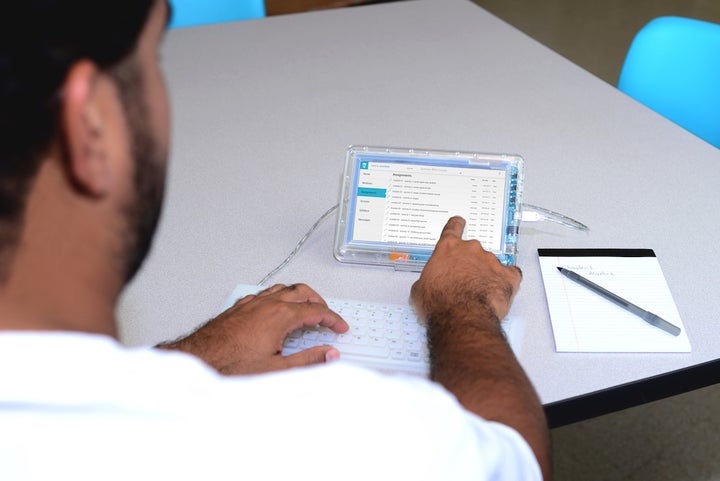
Hope comes in many forms, and for thousands of incarcerated individuals, a tablet-based education platform - JPay’s Lantern - is that hope.
Two years ago, JPay – a company that’s been transforming the corrections industry since 2001 – built a proprietary learning management system (LMS) that works in conjunction with their JP5 family of tablets to enable inmate education on a massive scale. That system, JPay’s Lantern, is indeed massive. The company recently announced that since the program’s launch, more than 70,000 students have enrolled in correctional facilities across the country, earning over 32,000 college credits. Talk about a full class.
Errol Feldman, CEO of JPay, is pleased with the results and optimistic for the future. “The adoption is incredible. With the opportunity to earn a GED or a college degree, or simply becoming acclimated to new technology, these students have much better odds of succeeding when they reenter society. Education provides hope, and we all deserve a second chance.”
Tech + Content = Experience
Lantern works with universities and organizations such as Ashland University and McGraw Hill to develop the curriculum. This combination of technology and quality content creates a virtual classroom experience, enabling incarcerated students to engage with professors outside of regular class time and use their tablets to complete coursework and reading at their own pace. According to Feldman, “in most facilities, they have the flexibility to study and complete homework in the living units, outside in the yard, or in the library…their efforts aren’t confined to just the classroom.”
Duncan Jamieson, Ph. D., is a History Professor for Ashland University who teaches both university and incarcerated students. “There’s no difference between regular college students and incarcerated students. Both populations have highly focused students interested in furthering their education and bettering their lives. Both populations have incredibly bright students who devour the information being presented. Both populations ask challenging questions, and both are respectful.”
Ashland University is one of the institutions to participate in the new Second Chance Pell Grant, and three of the university’s incarcerated students were among the first ever group to receive their associate’s degrees through the grant… a feat they accomplished using the Lantern platform.
Poised For Breakout
Building on success stories like these, the digital education revolution in corrections is poised for a breakout. According to Feldman, the Lantern program is growing leaps and bounds. New corrections agencies are coming on board each semester and JPay’s working with new curriculum partners to offer a wider variety of educational content.
Studies prove that inmate education reduces recidivism, which will help decrease the financial burden prisons impose on taxpayer wallets. So while it’s important for to be a compassionate society and to believe in second chances, in this instance, it’s also a smart economic decision.
“From a purely practical point of view, it costs much less to offer educational opportunities to inmates than it does to incarcerate them,” concludes Professor Jameison. “If the system is meant to rehabilitate, then digital inmate education is clearly a cost effective way to support that mission.”
